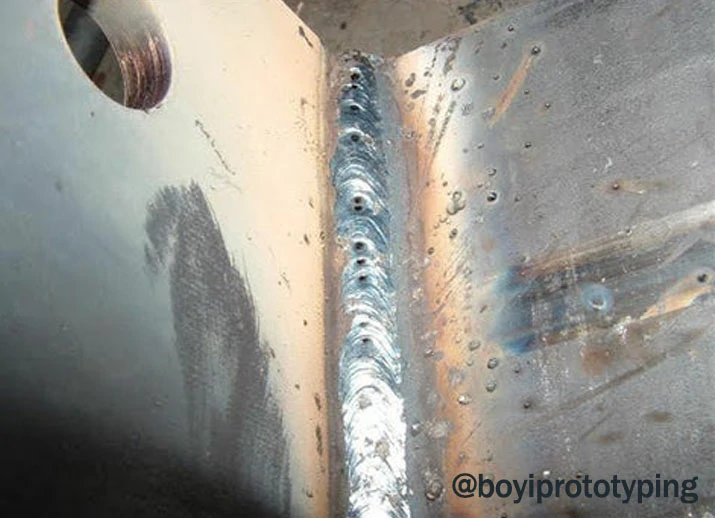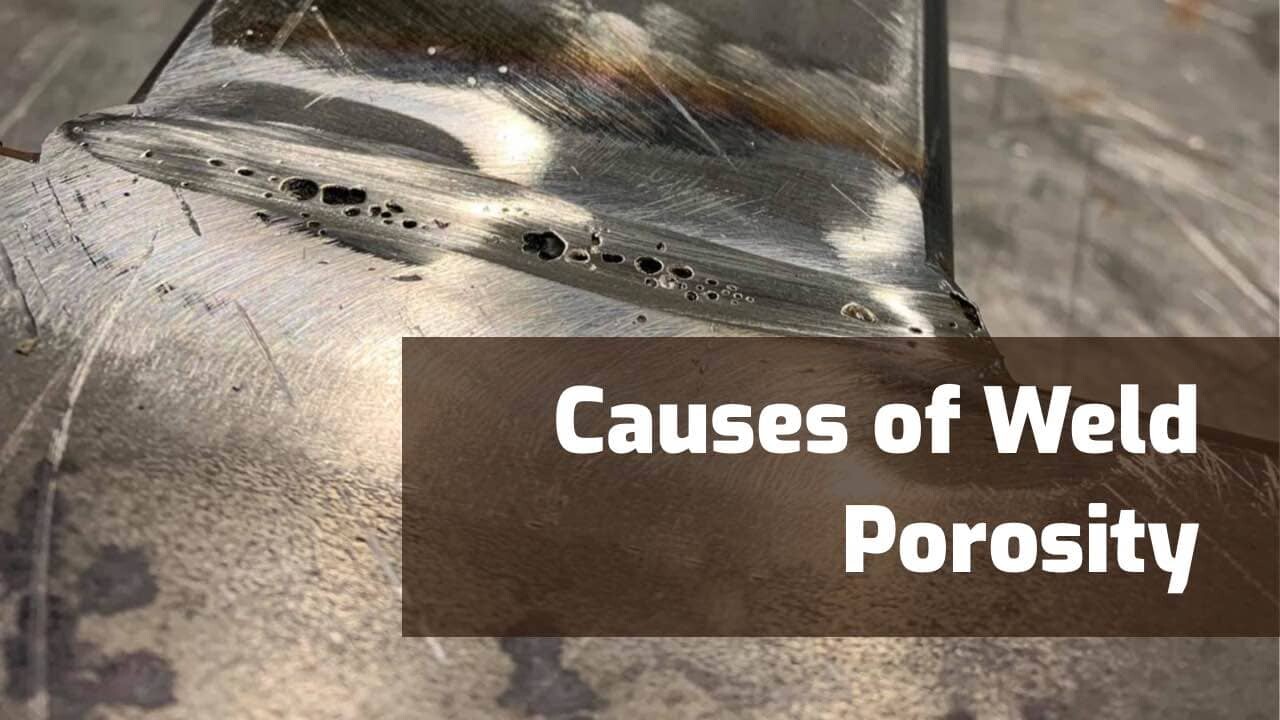Unwinding the Mystery of Porosity in Welding: Tips for Lessening Problems and Making Best Use Of Quality
In the detailed world of welding, porosity stays a persistent obstacle that can dramatically affect the quality and integrity of welded joints. As we dive into the midsts of porosity in welding, discovering the keys to its avoidance and control will be vital for experts looking for to master the art of premium weldments.
Recognizing Porosity in Welding
Porosity in welding, a typical concern experienced by welders, refers to the visibility of gas pockets or spaces in the bonded material, which can compromise the integrity and high quality of the weld. These gas pockets are normally caught during the welding process due to different variables such as incorrect securing gas, contaminated base materials, or wrong welding specifications. The formation of porosity can deteriorate the weld, making it susceptible to fracturing and rust, eventually bring about architectural failings.
By recognizing the relevance of maintaining appropriate gas securing, ensuring the cleanliness of base materials, and maximizing welding setups, welders can dramatically minimize the likelihood of porosity formation. On the whole, a detailed understanding of porosity in welding is important for welders to generate premium and long lasting welds.

Usual Sources Of Porosity
When checking welding procedures for possible top quality issues, understanding the typical reasons of porosity is essential for preserving weld integrity and stopping structural failures. Porosity, defined by the existence of tooth cavities or spaces in the weld metal, can considerably compromise the mechanical homes of a welded joint.
An additional widespread reason for porosity is the visibility of wetness and contaminants on the surface of the base steel or filler material. When welding materials are not effectively cleansed or are exposed to high degrees of humidity, the vaporization of these impurities during welding can create gaps within the weld grain. Additionally, welding at inappropriate specifications, such as excessively high traveling speeds or currents, can generate too much disturbance in the weld pool, capturing gases and triggering porosity. By addressing these typical causes via appropriate gas shielding, material prep work, and adherence to optimal welding specifications, welders can reduce porosity and boost the high quality of their welds.
Techniques for Porosity Prevention
Implementing reliable safety nets is essential in decreasing the occurrence of porosity in welding processes. One technique for porosity avoidance is ensuring appropriate cleansing of the base steel before welding. Pollutants such as oil, oil, corrosion, and paint can lead to porosity, so complete cleansing utilizing proper solvents or mechanical approaches is important.

Making use of high-grade filler products and securing gases that are appropriate for the base steel and welding procedure can substantially minimize the danger of porosity. Furthermore, maintaining proper welding parameters, such as voltage, existing, travel rate, and gas circulation rate, is important for porosity prevention.
Furthermore, using appropriate welding methods, such as maintaining a regular traveling rate, electrode angle, and arc size, can help prevent porosity (What is Porosity). Adequate training of welders to guarantee they comply with best techniques and quality assurance procedures is additionally necessary in reducing porosity defects in welding

Finest Practices for High Quality Welds
One secret practice is preserving correct tidiness in the welding location. Thoroughly cleaning up the work surface and surrounding location prior to welding can help alleviate these issues.
One more ideal practice is to very carefully select the ideal welding parameters for the certain products being joined. This includes establishing the correct voltage, present, take a trip rate, and shielding gas circulation rate. Appropriate criterion selection guarantees ideal weld infiltration, blend, visit this website and overall high quality. Additionally, using top quality welding consumables, such as electrodes and filler metals, can substantially influence the last weld quality. Buying premium consumables can result in stronger, much more long Bonuses lasting welds with less flaws. By adhering to these ideal techniques, welders can constantly generate high-quality welds that meet industry standards and exceed customer assumptions.
Relevance of Porosity Control
Porosity control plays an essential role in guaranteeing the integrity and top quality of welding joints. Porosity, identified by the existence of cavities or gaps within the weld steel, can considerably compromise the mechanical homes and structural honesty of the weld. Extreme porosity compromises the weld, making it more prone to breaking, corrosion, and total failure under functional tons.
Effective porosity control is necessary for preserving the wanted mechanical residential properties, such as stamina, ductility, and strength, of the bonded joint. What is Porosity. By reducing porosity, welders can boost the total top quality and reliability of the weld, guaranteeing that it satisfies the efficiency requirements of the intended application
In addition, porosity control is important for attaining the preferred visual appearance of the weld. Too much porosity not just damages the weld yet likewise diminishes its aesthetic charm, which can be important in industries where aesthetics are very important. Proper porosity control methods, such as using the right shielding gas, controlling the welding criteria, and making certain appropriate sanitation of the base materials, are essential for producing high-quality welds with minimal defects.

Verdict
In conclusion, porosity in welding is a common defect that can endanger the top quality of the weld. It is necessary to manage porosity in welding to make Related Site certain the honesty and strength of the final product.
 Alicia Silverstone Then & Now!
Alicia Silverstone Then & Now! Andrew Keegan Then & Now!
Andrew Keegan Then & Now! Burke Ramsey Then & Now!
Burke Ramsey Then & Now! Erika Eleniak Then & Now!
Erika Eleniak Then & Now! Stephen Hawking Then & Now!
Stephen Hawking Then & Now!